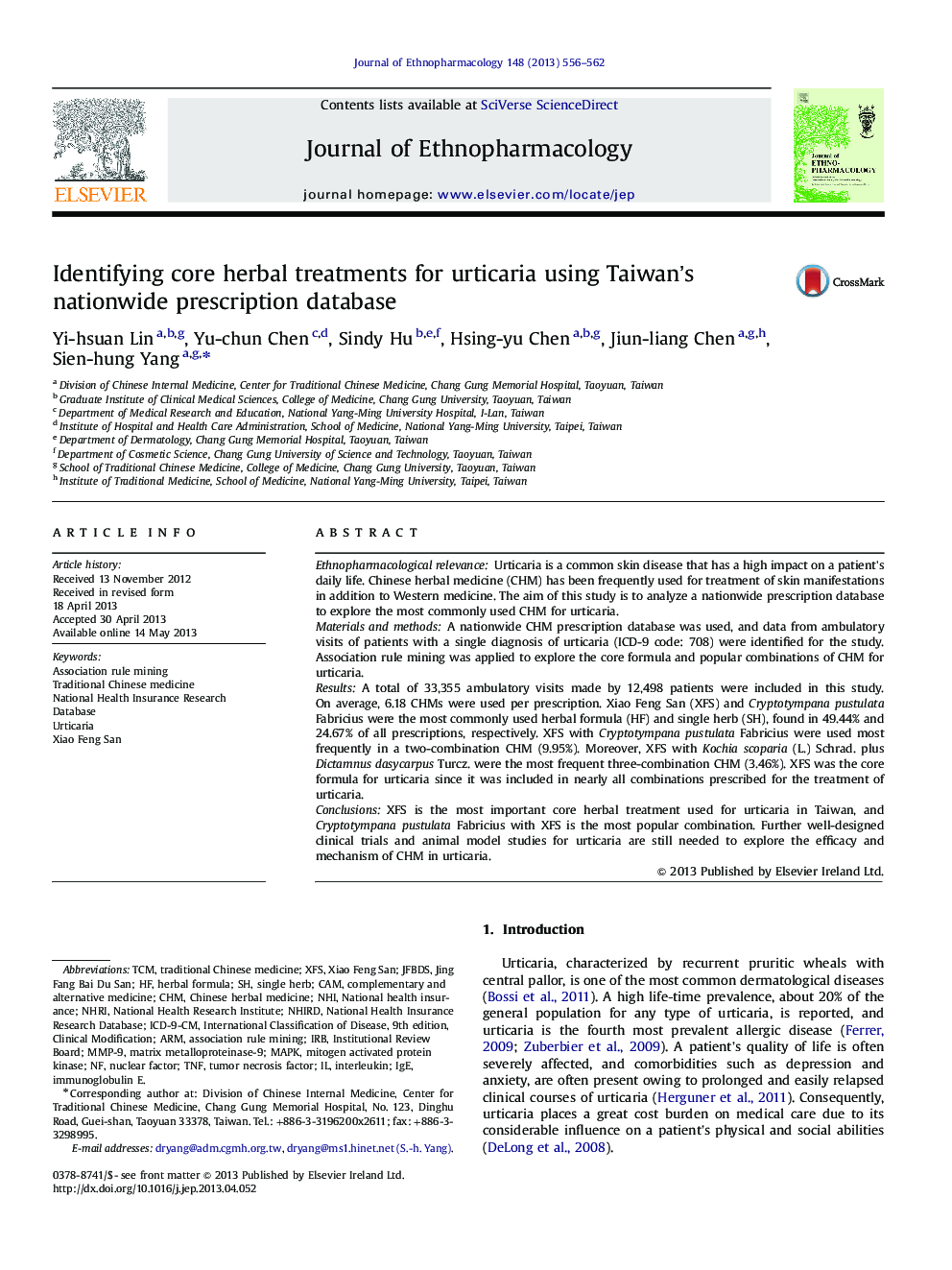| Article ID | Journal | Published Year | Pages | File Type |
|---|---|---|---|---|
| 5837151 | Journal of Ethnopharmacology | 2013 | 7 Pages |
Ethnopharmacological relevanceUrticaria is a common skin disease that has a high impact on a patient's daily life. Chinese herbal medicine (CHM) has been frequently used for treatment of skin manifestations in addition to Western medicine. The aim of this study is to analyze a nationwide prescription database to explore the most commonly used CHM for urticaria.Materials and methodsA nationwide CHM prescription database was used, and data from ambulatory visits of patients with a single diagnosis of urticaria (ICD-9 code: 708) were identified for the study. Association rule mining was applied to explore the core formula and popular combinations of CHM for urticaria.ResultsA total of 33,355 ambulatory visits made by 12,498 patients were included in this study. On average, 6.18 CHMs were used per prescription. Xiao Feng San (XFS) and Cryptotympana pustulata Fabricius were the most commonly used herbal formula (HF) and single herb (SH), found in 49.44% and 24.67% of all prescriptions, respectively. XFS with Cryptotympana pustulata Fabricius were used most frequently in a two-combination CHM (9.95%). Moreover, XFS with Kochia scoparia (L.) Schrad. plus Dictamnus dasycarpus Turcz. were the most frequent three-combination CHM (3.46%). XFS was the core formula for urticaria since it was included in nearly all combinations prescribed for the treatment of urticaria.ConclusionsXFS is the most important core herbal treatment used for urticaria in Taiwan, and Cryptotympana pustulata Fabricius with XFS is the most popular combination. Further well-designed clinical trials and animal model studies for urticaria are still needed to explore the efficacy and mechanism of CHM in urticaria.
Graphical abstractDownload high-res image (203KB)Download full-size image
